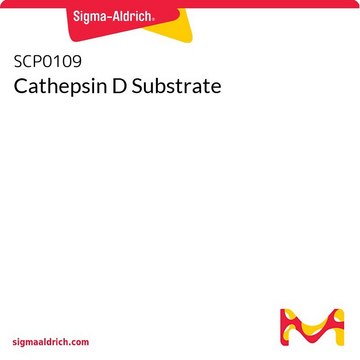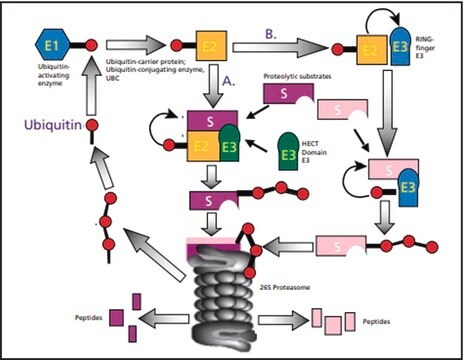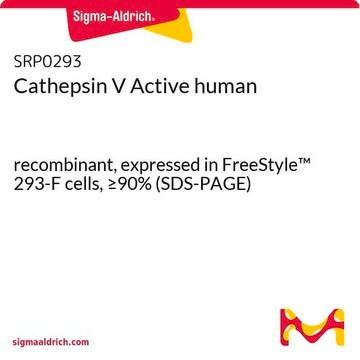SRP6415
Cathepsin D human
recombinant, expressed in HEK 293 cells, ≥95% (SDS-PAGE)
Sinônimo(s):
CLN10, CPSD, CTSD
About This Item
Produtos recomendados
fonte biológica
human
recombinante
expressed in HEK 293 cells
etiqueta
6-His tagged (C-terminus)
Ensaio
≥95% (SDS-PAGE)
Formulário
lyophilized
peso molecular
calculated mol wt 43.6 kDa
observed mol wt 45-55 kDa (DTT-reduced. Protein migrates due to glycosylation. Ser 19 is the predicted N-terminal.)
embalagem
pkg of 10 μg
fabricante/nome comercial
Sigma-Aldrich
condição de armazenamento
dry at room temperature
técnica(s)
activity assay: suitable
Impurezas
<1 EU/μg endotoxin (LAL test)
adequação
suitable for molecular biology
nº de adesão UniProt
aplicação(ões)
life science and biopharma
Condições de expedição
wet ice
temperatura de armazenamento
−20°C
Informações sobre genes
human ... CTSD(1509)
Descrição geral
Aplicação
Ações bioquímicas/fisiológicas
forma física
Reconstituição
Código de classe de armazenamento
11 - Combustible Solids
Classe de risco de água (WGK)
WGK 3
Ponto de fulgor (°F)
Not applicable
Ponto de fulgor (°C)
Not applicable
Escolha uma das versões mais recentes:
Certificados de análise (COA)
Lamentamos, não temos COA para este produto disponíveis online no momento.
Se precisar de ajuda, entre em contato Atendimento ao cliente
Já possui este produto?
Encontre a documentação dos produtos que você adquiriu recentemente na biblioteca de documentos.
Nossa equipe de cientistas tem experiência em todas as áreas de pesquisa, incluindo Life Sciences, ciência de materiais, síntese química, cromatografia, química analítica e muitas outras.
Entre em contato com a assistência técnica








